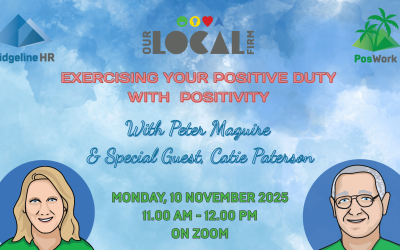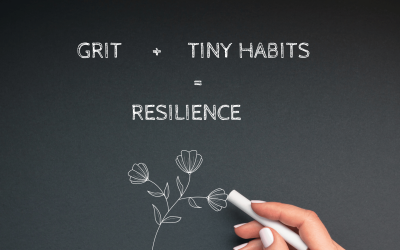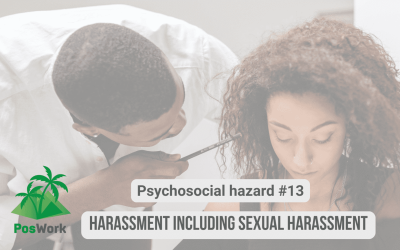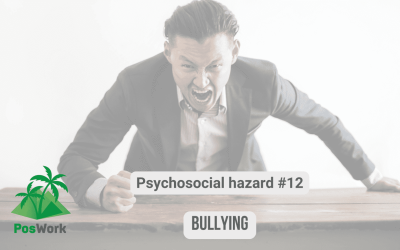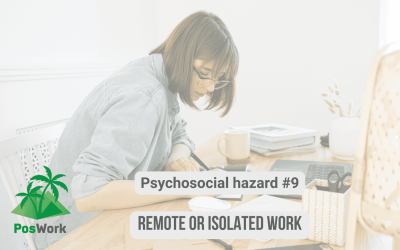BLOGS AND Stories

BLOGS
A collection of our own articles and other blogs of interest in the BETTER WORKPLACE theme.
Why a strengths-based approach to psychological safety works best
Blogs and Stories One of the challenges with the new positive duty to eliminate or reduce psychosocial hazards is that people don't seem to appreciate that the duty isn't new - just the word "positive". Plus the regulators' approach isn't new - it is the same risk...
Webinar: Exercising Your Positive Duty With Positivity
Blogs and Stories ABOUT From 1 December 2025, all Victorian businesses have a new positive duty to eliminate or reduce psychosocial hazards and that involves a lot more than just doing a risk assessment and updating your policies. It also provides a great opportunity...
The power of positive reflection
Blogs and Stories Have you heard any workplace culture gurus say that you can only learn from your mistakes? We disagree. While analysing what went wrong has its place, constantly focusing on deficits can be draining and demotivating. What if we flipped the script?...
How a strengths mindset tops a risk management mindset
Blogs and Stories With the advent of the new positive duties, is it really effective to address the prevention of sexual harassment and gender-based behaviours and the elimination or control of psychosocial hazards with the same old risk management and control process...
How creativity aids leadership
Blogs and Stories Creativity and leadership are two of my signature strengths and using them in partnership can be really powerful and conducive to high levels of employee engagement and innovation, two essential ingredients in successful, people-centred...
A recipe for resilience
Blogs and Stories One of the key findings from the aggregated research on workplace wellbeing that The Australian Human Resources Institute in conjunction with the Michelle McQuaid Group and others undertook from 2018 to 2023 was that there was a significant downturn...
Delivering positive change with HEART
Blogs and StoriesChange management invariably comes up as one of those key areas for improvement in staff surveys, doesn't it? And now that "poor change management" is one of the prescribed psychosocial hazards, that further shines a light on it, especially given that...
Psychosocial hazard #14 – Conflict or Poor Workplace Relationships or Interactions
This last one is a bit of a catch-all for risks associated with poor workplace behaviours or incidents that might technically fall into the category of bullying or harassment. There can be a number of underlying factors and commonly other psychosocial hazards are in play.
Psychosocial hazard #13 – Harassment including sexual harassment
There are lots of personal characteristics like age and gender and sexual orientation and ethnicity and union membership or political affiliation or religion or pregnancy or marital status and so many more which are protected attributes. That means that it is illegal to discriminate against or harass someone on the basis that they possess that particular attribute. As we know, sexual harassment is a significant issue in workplaces and there is now a positive duty to prevent it. How are you doing with that? Here are some questions to ask.
Psychosocial hazard #12 – Bullying
Bullying is repeated unreasonable conduct that causes a risk of psychosocial injury to a worker or a group of workers. It can be caused by and affect any workplace participant – employees, contractors, managers, customers, suppliers, unions and others. Most organisations now have anti-bullying policies but do they work? Here are some questions to ask.
Psychosocial hazard #11 – Violence and Aggression
Whether the violence or aggressive behaviour comes from colleagues or clients or suppliers or the general public is immaterial – the point is that it can have serious consequences to workers who are exposed to it. What can you do to identify problems and put in place control measures? Here are some questions to ask.
Psychosocial hazard #10 – Poor Physical Environment
Do people have to wear protective clothing or equipment? Or do they have to work in crowded, noisy or inclement weather conditions? Are there hazardous chemicals? Is the physical workplace fit for purpose and safe? There are lots of ways that people can experience a poor physical working environment.
VIDEOS
Our videos are a mix of explainers on various elements of making BETTER WORKPLACES and stories on good practices that we have come across or been involved in.
Psychosocial hazard #14 – Conflict or Poor Workplace Relationships or Interactions
This last one is a bit of a catch-all for risks associated with poor workplace behaviours or incidents that might technically fall into the category of bullying or harassment. There can be a number of underlying factors and commonly other psychosocial hazards are in play.
Psychosocial hazard #13 – Harassment including sexual harassment
There are lots of personal characteristics like age and gender and sexual orientation and ethnicity and union membership or political affiliation or religion or pregnancy or marital status and so many more which are protected attributes. That means that it is illegal to discriminate against or harass someone on the basis that they possess that particular attribute. As we know, sexual harassment is a significant issue in workplaces and there is now a positive duty to prevent it. How are you doing with that? Here are some questions to ask.
Psychosocial hazard #12 – Bullying
Bullying is repeated unreasonable conduct that causes a risk of psychosocial injury to a worker or a group of workers. It can be caused by and affect any workplace participant – employees, contractors, managers, customers, suppliers, unions and others. Most organisations now have anti-bullying policies but do they work? Here are some questions to ask.
Psychosocial hazard #11 – Violence and Aggression
Whether the violence or aggressive behaviour comes from colleagues or clients or suppliers or the general public is immaterial – the point is that it can have serious consequences to workers who are exposed to it. What can you do to identify problems and put in place control measures? Here are some questions to ask.
Psychosocial hazard #10 – Poor Physical Environment
Do people have to wear protective clothing or equipment? Or do they have to work in crowded, noisy or inclement weather conditions? Are there hazardous chemicals? Is the physical workplace fit for purpose and safe? There are lots of ways that people can experience a poor physical working environment.
Psychosocial hazard #9 – Remote or Isolated Work
Whether it is working away from home for extended periods or working at home on your own or working solo out in the field like a truck driver, there are lots of different ways that people can be affected by having to perform remote or isolated work.
CONTACT US
PosWork
A Division of Ridgeline Human Resources Pty Ltd
ABN : 24 091 644 094
info@poswork.com.au
0438 533 311
QUICK RESOURCE LINKS

